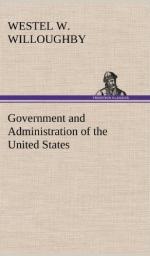_#Method of Procedure.#_—As soon as the State and Territorial delegations arrive in the city they each elect a member for the new National Central Committee for the next term. Inside of this committee is chosen an executive committee, which, in reality, does all the work of conducting the campaign. The members of this committee are almost always men of wealth, and are expected to contribute liberally to the campaign fund.
The business of the National Convention is commenced by the chairman of the National Central Committee calling the convention to order. A temporary chairman is then chosen, who appoints a “committee on credentials,” whose duty it is to decide which delegation shall be admitted in case two delegations are sent from the same State, both claiming admittance as representing the party in that State. A “committee on resolutions” is also appointed to prepare the party platform. The next day the permanent chairman is appointed. The platform is then read and adopted, or amended and adopted. There is next an alphabetical roll-call of the States, when names are proposed and seconded for nomination as candidates for President. The average number of names proposed is seven or eight, though sometimes as many as twelve are offered. As each man is proposed the delegate presenting his name extols him in a laudatory speech, and gives reasons why his man will make a strong candidate and an able President. Voting then commences. Each delegate has one vote. In the Republican convention a majority of the whole number of the delegates voting for one man is required before a nomination is reached, while the Democrats require a two-thirds vote. Sometimes a nomination is made on the first ballot, while at other times the convention has been so divided that as many as 53 ballots have been required, as was the case when the Whigs nominated Scott. Forty-nine ballots were needed when Pierce was nominated by the Democrats. In 1888 Cleveland was nominated by the Democrats by acclamation, no vote being necessary to show the wishes of the delegates. Harrison was nominated by the Republicans on the eighth ballot.
A candidate for President having been selected, a Vice President is nominated in a similar manner, though generally with much less trouble, and the work of the convention is ended.




